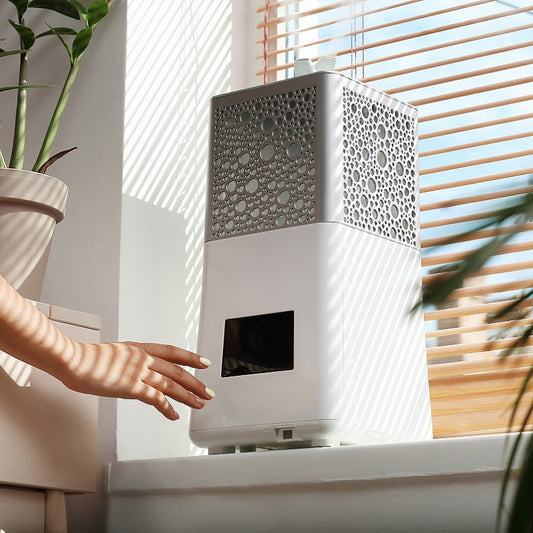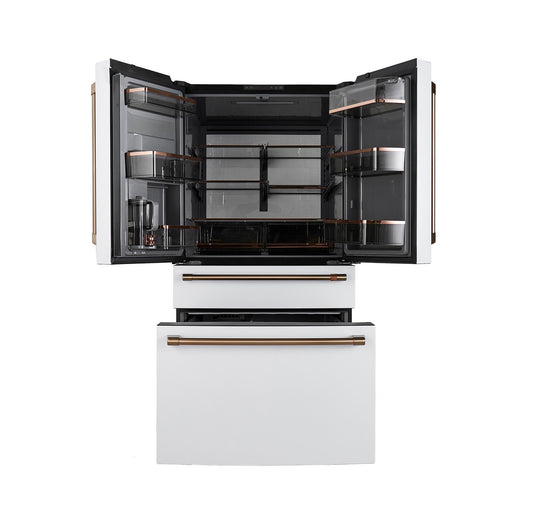Induction cooktops have become popular in recent years due to their efficiency and speed. However, induction stovetops require you to use specific cookware made of ferrous metals. This limitation may result in an unnecessary expense or storage space. Luckily, there are several induction cooktop hacks that can make any cookware compatible with induction technology. In this article, we will explore these hacks, including the popular metal ring method and alternative solutions. We'll also provide tips for safe and efficient cooking on induction cooktops. Keep reading to learn more about how to use induction cooktops with any cookware.
Stay tuned for hacks and tips that will make your induction cooking experience seamless and adaptable, allowing you to cook with any cookware you prefer, including your old favorites.
Understanding Induction Cooktops
Induction cooktops are a modern kitchen appliance that uses electromagnetic current to directly heat cookware. Unlike gas or electric stovetops, induction stovetops don't rely on an open flame or heating element to transfer heat to the cookware. Instead, the cookware itself acts as the heating element as it interacts with the electromagnetic field generated by the cooktop. This transfer of energy creates heat quickly and efficiently, allowing for precise temperature control and faster cooking times. One of the main benefits of using an induction cooktop is that it's much safer than traditional gas or electric stoves. There's no open flame or exposed heating element to worry about, making it a great option for households with children or pets. Induction cooktops are also incredibly energy-efficient since they only heat the cookware itself, rather than the air around it. This means that less heat is wasted, and you can save money on your energy bills over time. If you're considering upgrading your kitchen appliances, an induction cooktop may be a smart choice. Its precise temperature control, safety features, and energy efficiency make it a valuable addition to any modern kitchen.

The Metal Ring Method
If you want to use your regular cookware on an induction cooktop, the metal ring method is one of the most popular hacks.
The metal ring is a simple yet effective solution that allows non-induction cookware to work on an induction cooktop. The ring is typically made of iron or stainless steel and is placed on the cooking surface of the induction cooktop. When you place your non-induction cookware on top of the metal ring, the ring serves as a conduit for the magnetic field and heats up your cookware through induction.
To use the metal ring method, follow these steps:
- Clean the induction cooktop surface and ensure it's free of any debris or residues.
- Place the metal ring on the cooking surface of the induction cooktop.
- Place your non-induction cookware on top of the metal ring.
- Turn on the induction cooktop and adjust the temperature as needed.
Keep in mind that the size of the metal ring is important. The ring should be at least the same size as the bottom of your cookware to ensure proper heating. Additionally, the metal ring should be thick enough to prevent warping or bending due to the heat. While the metal ring method is a popular and effective hack, it's important to note that it may not work with all types of cookware. Cookware with extremely uneven or warped bottoms may not provide enough contact with the metal ring and may not heat up as desired. In these cases, alternative hacks may be needed.
Other Induction Cooktop Hacks
Besides the metal ring method, there are other hacks you can try to make your induction cooktop work with any cookware. Here are some alternative solutions:
- Heat Diffuser: This hack involves using a heat diffuser plate between the cookware and the induction cooktop. The diffuser plate helps evenly distribute the heat, making it easier for the cookware to conduct the heat. You can find heat diffuser plates online or at department stores.
- Magnetic Strips: This hack involves attaching magnetic strips to the bottom of non-induction cookware to make them compatible with the induction cooktop's magnetic field. You can purchase magnetic strips online or at kitchen supply stores.
- Induction Converter Discs: This hack involves using an induction converter disc, which is a metal plate that sits between the cookware and the induction cooktop. The converter disc helps transfer heat from the induction cooktop to the cookware. You can find induction converter discs at specialty kitchen stores or online.

When using these hacks, it's important to keep in mind that the cooking times and temperatures may vary compared to using induction-ready cookware. Adjust your cooking accordingly and monitor the heat to prevent overheating or burning.
Tips for Safe and Efficient Induction Cooking
Now that you know how to use your induction cooktop with any cookware, it's important to keep safety and efficiency in mind. Here are some tips to help you get the most out of your induction cooktop:
Use appropriate cookware
While induction cooktops can work with many types of cookware, it's important to choose materials that are compatible with induction cooking. Stainless steel, cast iron, and enameled cast iron are great options. Avoid using aluminum, copper, and glass cookware, as they are not magnetic and will not work with induction stovetops.
Keep cookware in good condition
Scratches, dents, and warped bottoms can affect the performance of your cookware on an induction cooktop. Be sure to inspect your cookware regularly and replace any damaged pieces.
Don't slide cookware
Induction cooktops heat the cookware directly, so sliding pots and pans can scratch the surface. Lift and place your cookware gently to avoid damaging your cooktop.
Use appropriate heat settings
Induction cooktops heat up quickly, so it's important to use appropriate heat settings for your cookware and the food you are cooking. Start with low heat and gradually increase it as needed. Avoid using high heat settings for extended periods of time, as this can damage your cookware and cooktop.
Clean regularly
Regular maintenance is important for the longevity and efficiency of your induction cooktop. Clean your cooktop regularly with a soft cloth and mild detergent. Avoid using abrasive cleaners that can scratch the surface.
Don't forget to turn off the cooktop
Induction cooktops heat up quickly and can also cool down quickly. Always remember to turn off your cooktop when you're finished cooking to conserve energy and avoid any safety hazards.

Induction cooktops offer a highly efficient and safe cooking experience, but their compatibility with specific cookware can be a limitation. Fortunately, the metal ring method and alternative hacks provide practical solutions to make your favorite cookware compatible with induction technology. For those interested in upgrading to an induction cooktop or exploring induction-ready cookware options, you can conveniently explore and purchase induction cooktops online at Town Appliance. Whether you're a seasoned home chef or a culinary enthusiast, induction cooking can elevate your kitchen experience, offering a versatile and efficient way to prepare delicious meals.







